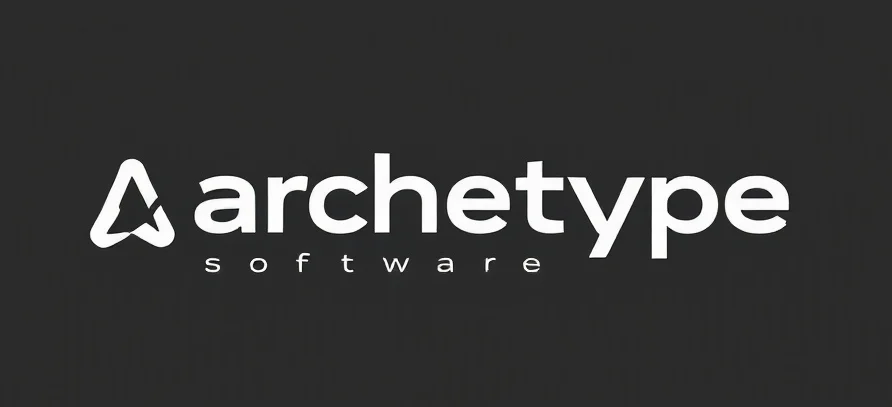High-quality product photos are critical for any e-commerce venture, where first impressions shape buyer decisions. Photoshop remains one of the most versatile tools for editing product images, enabling businesses to achieve clean, professional visuals. In this detailed guide, we’ll walk through essential steps on how to edit product photo in Photoshop, from initial setup and basic edits to advanced techniques like shadow enhancement and color correction. For the complete step-by-step breakdown, check out ProductScope’s comprehensive guide.
Prepping for Success: Initial Product Photo Setup
Getting the right shot is the first step to great product photos. For consistency, use a high-resolution camera on a tripod with controlled lighting. Neutral backdrops work best, as they keep the focus on the product. Adjust your camera settings to prevent overexposure, underexposure, or blurriness—each of which can detract from your product’s appeal.
After capturing a well-lit, stable photo, import the image into Photoshop, setting up a canvas at 300 PPI (pixels per inch) to ensure high-quality resolution throughout the editing process. How to edit product photos in Photoshop becomes essential here, as the right setup helps you achieve sharp, professional-looking results.
Glossary of Terms for Beginners in Product Photography and Photoshop Editing
If you’re just getting started with product photography or editing eCommerce photos, understanding the key terminology can make the process much easier. Here’s a glossary of important terms you might encounter while editing product photos in Photoshop or setting up your product photography studio.
- Product Photography Setup: This refers to the entire arrangement of lighting, camera settings, and background used to capture high-quality images of products. The right product photography setup ensures that your images are clear, well-lit, and professional-looking.
- Product Shot / Product Photography Shot: A product shot is a photograph of a product, typically used for advertising or e-commerce listings. These photos are essential for showcasing your product in a way that’s visually appealing to potential customers.
- Commercial Product Photography: This type of photography focuses on creating professional, high-quality images for use in advertisements, catalogs, websites, or other commercial purposes. Commercial product photography requires expertise in both photography and editing to ensure the images are polished and eye-catching.
- Product Photography Editing: This involves adjusting and enhancing your product shots after they’ve been taken. Product photography editing may include color correction, removing imperfections, and adjusting shadows to make the product stand out.
- Camera Settings for Product Photography: These are the specific settings on your camera, including aperture, shutter speed, and ISO, that help you achieve the best image quality for your product shots. Understanding the right camera settings for product photography is crucial to capturing clear, high-quality images.
- Small Product Photography Setup: When working with small items, such as jewelry or accessories, you need a specialized small product photography setup. This setup typically includes a lightbox or a clean, neutral background to keep the focus on the product.
- How to Make Product Pictures Look Professional in Photoshop: To make your product pictures look polished and professional, you’ll want to use Photoshop’s editing tools to correct any lighting issues, remove distractions, and enhance details.
- Product Photography Definition: Product photography is the art of taking clear, attractive images of products for commercial purposes. This can involve different techniques, from lighting setups to editing, to showcase the product in the best possible light.
- Getting Started in Product Photography: If you’re new to product photography, it’s important to start with the basics. This includes setting up your product photography camera settings, lighting, and learning the basic editing techniques that can help you enhance your images.
- How to Edit eCommerce Photos: Editing eCommerce photos often involves removing backgrounds, correcting color, and ensuring the product appears as true to life as possible. Knowing how to edit eCommerce photos in Photoshop can help you create compelling images that attract buyers.
Basic Edits to Perfect the Image
Once the image is loaded, start by making simple adjustments to ensure clarity and cleanliness:
- Spot Removal: Use the Healing Brush and Clone Stamp tools to eliminate minor blemishes, dust, or inconsistencies on the product or background. The Healing Brush blends the edited area seamlessly, while the Clone Stamp duplicates a nearby section to cover flaws.
- Adjusting Levels: Access the Levels adjustment to modify highlights, shadows, and mid-tones, which enhances clarity. Adjusting these levels ensures the product stands out crisply against its background.
- Refining Edges: Use the Select and Mask option to soften any rough edges, ensuring smooth transitions. This tool is especially useful for products with intricate outlines or textures.
Being familiar on how to make product pictures look professional in Photoshop starts with these basic steps, which lay the foundation for a polished, refined image that enhances your product’s appeal.
Advanced Photoshop Techniques for Product Photos
Taking your edits a step further with advanced techniques will elevate your product images from good to stunning. Here are some essential methods for creating an engaging and realistic look:
Cutting Out the Product with Precision
Accurately separating the product from its background makes it easier to customize and repurpose the image. The Pen Tool is ideal for detailed selections around complex shapes, allowing you to trace the product precisely. Zoom in as you work, adding anchor points along the product’s edge. After outlining, refine the selection with the Select and Mask function to smooth edges, making the cutout appear natural when placed on a new background.
Enhancing Shadows and Background
Adding shadows can make a product look grounded and realistic, which helps in creating an appealing product display. You can achieve this by duplicating the product layer, filling it with black, and adjusting the opacity to give it a soft shadow. Play with the Gaussian Blur filter to soften the shadow and then adjust its position for a natural light effect.
For the background, you can enhance the appeal by adding a subtle gradient or creating a custom background that complements the product. Simple, neutral backdrops often work best as they keep the product in focus.
Knowing how to edit product photo in Photoshop with advanced techniques like these ensures your products stand out and look their absolute best.
Perfecting Color with Adjustment Layers
Color correction is essential to ensure that your product’s colors appear as they do in real life. Start by adding adjustment layers for curves and hue/saturation. The Curves adjustment lets you enhance brightness and contrast dynamically, while the Hue/Saturation adjustment helps you modify colors without impacting the image quality.
Blending modes can add a creative flair. For instance, using Overlay or Soft Light modes on duplicate layers can add dimension and highlight details without overwhelming the natural look of the product.
Exporting for Optimal Quality
When saving the edited images, choosing the right file type and size is crucial for quality and load speed. For web use, export in JPEG format to balance quality and file size; for transparent backgrounds, PNG is ideal. TIFF is preferable for print needs, as it preserves high-quality resolution. Consider resizing images to keep file sizes manageable, which speeds up page load times and enhances user experience.
Creating Photoshop Actions—a feature that lets you record editing steps and apply them to multiple images at once—can streamline your workflow, especially for businesses that need to process large numbers of photos.
Common Mistakes to Avoid When Editing Product Photos
When editing your product shots, it’s easy to make mistakes that can compromise the quality of your images. Avoiding these common pitfalls will ensure your product photography looks professional and polished, helping you create better eCommerce photos that stand out. Here are a few mistakes to watch out for:
Ignoring Proper Camera Settings for Product Photography
One of the most common mistakes beginners make is not setting the camera correctly before shooting. Camera settings for product photography are crucial for achieving sharp, clear images. Ensure that your aperture, shutter speed, and ISO settings are optimized for the lighting conditions and product you’re photographing. Poor camera settings can lead to blurry or poorly lit images that require significant editing.
Over-editing Photos
While editing is essential for achieving the perfect product shot, overdoing it can make your photos look unnatural. Excessive use of filters, heavy sharpening, or overly brightening images can make them appear artificial. Aim for a more natural look that showcases your product accurately. Instead, focus on subtle adjustments to enhance the image while retaining its authenticity.
Not Using the Right Product Photography Setup
A poorly set-up photography space can lead to inconsistent lighting, shadows, and reflections, which can be difficult to fix in post-production. Always ensure that you have a proper product photography setup with even lighting, a clean background, and appropriate positioning of the product. A solid setup from the start minimizes the need for excessive editing later on.
Not Properly Aligning and Cropping the Product
Make sure your product is centered and aligned properly in the frame. A small product photography setup can be especially tricky with items like jewelry or accessories, where precision is key. Cropping too tightly around the product or cutting off important details can reduce the image’s overall appeal. Always double-check the crop and alignment before finalizing your image.
Neglecting to Edit for Consistency
Inconsistent lighting, colors, or shadows across your product photography can make your product photos look disjointed. If you’re shooting a series of product shots for an eCommerce store, ensure that they all have a similar style and tone. Use Photoshop to adjust the white balance, contrast, and shadows, so all your images appear cohesive when displayed together on your website.
Skipping the Product Photography Editing Stage
Some beginners believe that if they have great lighting and a solid product photography setup, no editing is necessary. However, product photography editing is essential to ensure that each photo is polished, color-corrected, and free from distractions. Don’t skip the editing stage, even if your raw images seem good enough.
Not Using the Right Tools for Editing
While Photoshop is the go-to for professional-level editing, there are free or more accessible tools that beginners can use, especially when just getting started in product photography. However, make sure to familiarize yourself with the tools available and how they impact your photos. Tools like the Clone Stamp or Healing Brush are great for removing small blemishes, but using them incorrectly can leave unnatural marks on your images.
Overlooking the Importance of Editing for E-commerce
When editing for eCommerce photos, remember that the goal is to make your product look its best while maintaining accuracy. Over-styling or manipulating the image too much could mislead potential customers. Keep the focus on the product and make sure the final photo truly represents the item in real life. This is especially important when trying to answer the question, “How to make product pictures look professional in Photoshop.”
Final Thoughts
Mastering Photoshop techniques for product photos can transform your e-commerce platform by showcasing products in the best light possible. With each enhancement—from background tweaks to color adjustments—you move closer to presenting a product that captivates customers and boosts conversions. For a more in-depth exploration of each technique, check out ProductScope’s full guide on product photo editing in Photoshop.
Checkout ProductScope AI’s Studio (and get 200 free studio credits)

